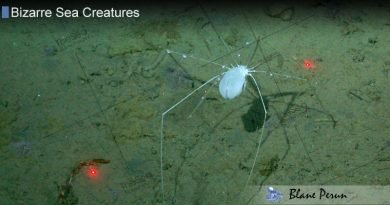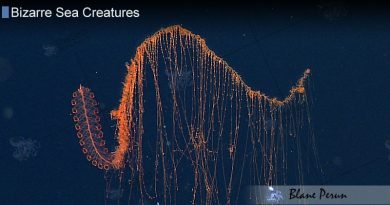Tasselled Wobbegong
Tasselled Wobbegong
The Tasselled Wobbegong (Eucrossorhinus dasypogon) is a master of camouflage and one of the most fascinating species of carpet sharks. Found primarily in the shallow reefs around northern Australia, Papua New Guinea, and Indonesia, this remarkable shark is perfectly adapted for life on the seafloor. Its ornate appearance, fringed mouth, and stealthy ambush tactics make it one of nature’s most impressive examples of disguise and precision predation. Like the mariana snailfish, the tasselled wobbegong embodies nature’s creative solutions for survival in challenging marine environments.
Introduction: Nature’s Camouflaged Predator
The Tasselled Wobbegong belongs to the family Orectolobidae, known for their flat bodies and intricate skin patterns that mimic the ocean floor. This species inhabits coral reefs and rocky seabeds at depths of up to 50 meters. Despite its size—adults can grow up to 1.8 meters long—the wobbegong’s ability to vanish into its surroundings makes it nearly invisible to both prey and predators.
Anatomy and Distinctive Features
Camouflage and Physical Traits
The tasselled wobbegong’s name comes from the distinctive fringe of dermal lobes, or “tassels,” surrounding its mouth and head. These appendages break up its outline, making it blend seamlessly with coral and rock formations. Its mottled green, brown, and yellow skin patterns mimic the textures of algae-covered reefs, allowing it to lie in wait for unsuspecting prey. These sensory barbels also help the shark detect vibrations and scents in the water—perfect tools for an ambush predator. Similar to how the halitrephes maasi jellyfish uses its bioluminescent display for both concealment and attraction, the tasselled wobbegong relies on deceptive appearance to lure its next meal.
Body Size and Structure
Adult Tasselled Wobbegongs typically reach between 1.25 and 1.8 meters in length, although some reports suggest individuals growing up to 3 meters. The shark’s body is broad and flat, with a large, wide head and small eyes positioned on top. Its mouth, which extends far past the eyes, contains multiple rows of sharp, pointed teeth—19 in the upper jaw and up to 26 in the lower. The arrangement of these fanged teeth makes it capable of gripping and consuming prey nearly as large as itself.
Habitat and Distribution
The Tasselled Wobbegong is found primarily in the tropical and subtropical waters surrounding northern Australia and southern New Guinea. It inhabits coral reefs, seagrass beds, and sandy areas where it can remain motionless and hidden. Its preference for shallow, intertidal zones and caves makes it both a top predator and a vulnerable species when reefs face environmental stress.
Diet and Feeding Behavior
The Tasselled Wobbegong is an ambush predator, relying on stealth rather than speed. It spends most of its time resting on the ocean floor, waiting for prey such as fish, cephalopods, and crustaceans to pass by. When an opportunity arises, it launches a lightning-fast attack, engulfing its prey whole. In one recorded case, a tasselled wobbegong swallowed another shark nearly its own size—an impressive testament to its feeding capacity and jaw flexibility.
Reproductive Biology
Like other carpet sharks, the Tasselled Wobbegong is ovoviviparous, meaning that embryos develop inside eggs that remain within the mother’s body until they hatch. After a gestation period of about 11 months, females give birth to live pups, usually between 6 and 12 in a litter. These young wobbegongs are fully formed miniatures of their parents, equipped with camouflage and hunting instincts from birth.
Behavior and Ecology
Ambush Tactics and Lifestyle
Despite its intimidating appearance, the Tasselled Wobbegong is a slow-moving, sedentary species. It prefers to rest during the day, becoming more active at night when hunting. Its ambush strategy, combined with its cryptic coloration, makes it one of the most efficient reef predators. The species’ poor swimming ability reinforces its dependence on camouflage and stealth for survival.
Interaction with Other Species
In its coral reef ecosystem, the tasselled wobbegong plays an important role as a regulator of smaller fish and invertebrate populations. It also serves as prey for larger sharks, creating a balanced food web. Its ecological relationship with other reef dwellers mirrors the interconnected nature of marine ecosystems, much like the dynamic seen between the mariana snailfish and its deep-sea environment.
Conservation and Threats
The Tasselled Wobbegong is currently listed as Near Threatened due to habitat loss, coral reef degradation, and accidental capture in fishing nets. Because it relies heavily on coral reefs for shelter and hunting, environmental decline poses a serious risk to its populations. Conservation measures, including marine protected areas and sustainable fishing practices, are essential for preserving this unique species and its ecosystem.
Human Interaction
Though not typically aggressive, the Tasselled Wobbegong can bite if provoked or stepped on—a risk for divers or snorkelers unaware of its camouflaged presence. Respecting its space and maintaining distance are crucial when observing these fascinating sharks in their natural habitat. Their stunning patterns and elusive behavior make them a favorite subject for underwater photography and marine research alike.
Conclusion
The Tasselled Wobbegong is one of nature’s most striking examples of evolutionary artistry—an animal that thrives through stillness, deception, and perfect adaptation. Its tasselled features, stealthy hunting style, and vital role in coral reef ecosystems underscore the complexity of marine biodiversity. From its resemblance to seaweed-covered rocks to its lightning-fast ambushes, the tasselled wobbegong stands as a living reminder of how life in the ocean continuously evolves in harmony with its surroundings. Like the halitrephes maasi jellyfish and mariana snailfish, this shark reveals the extraordinary diversity of survival strategies found beneath the waves—and the importance of protecting the world’s fragile marine habitats.




